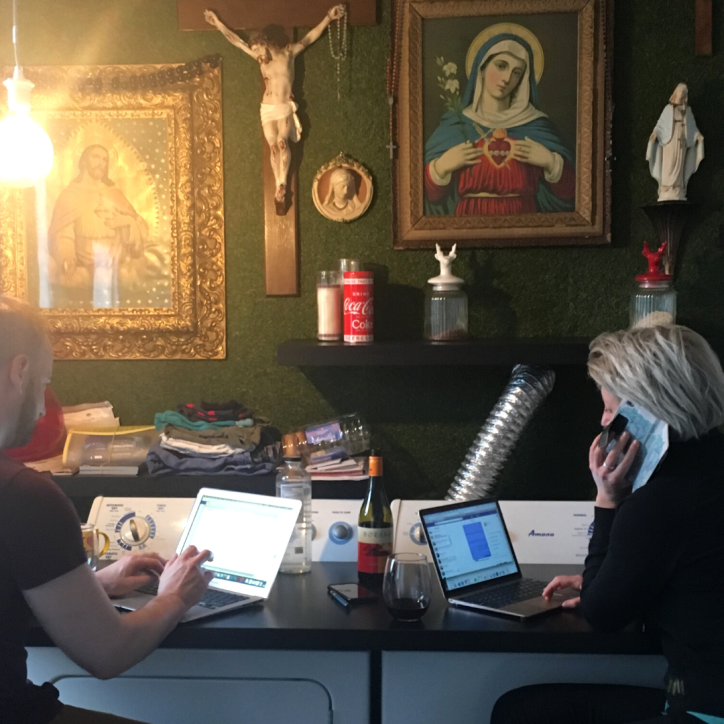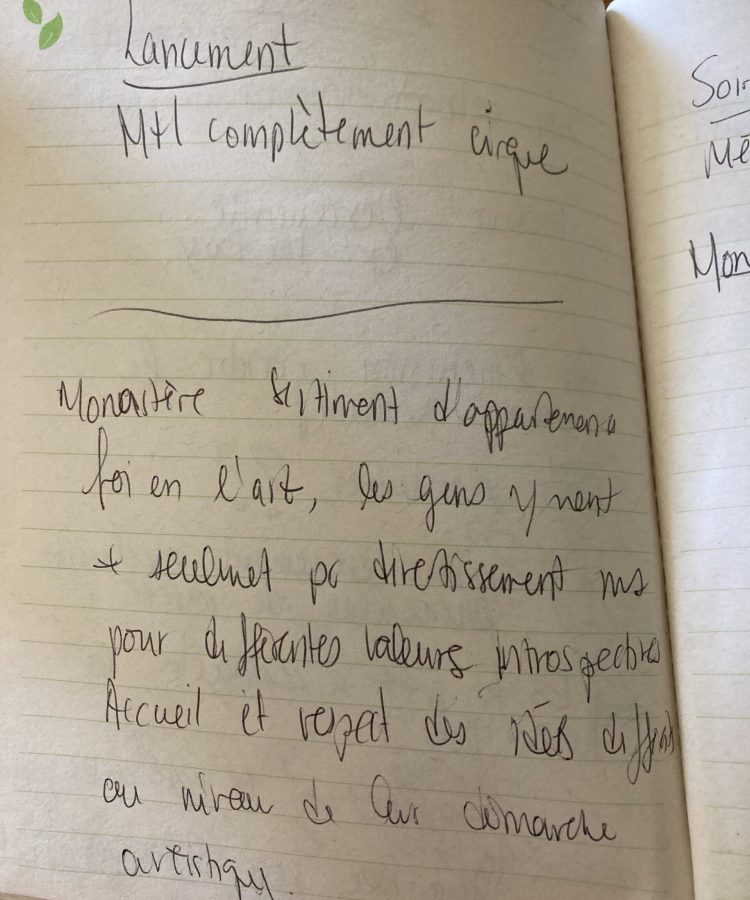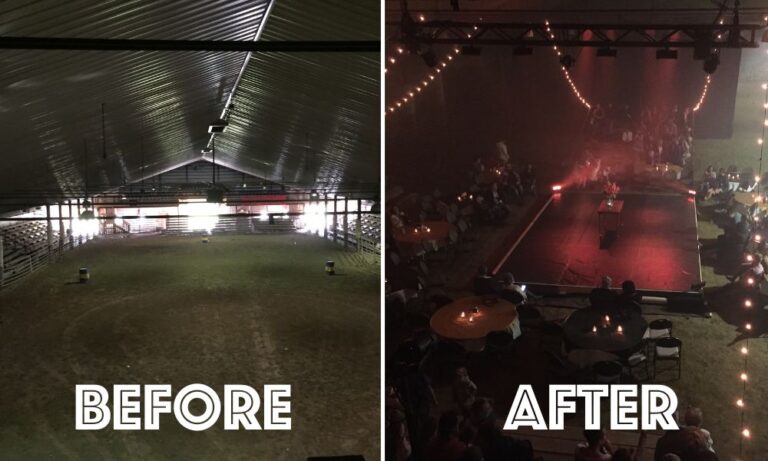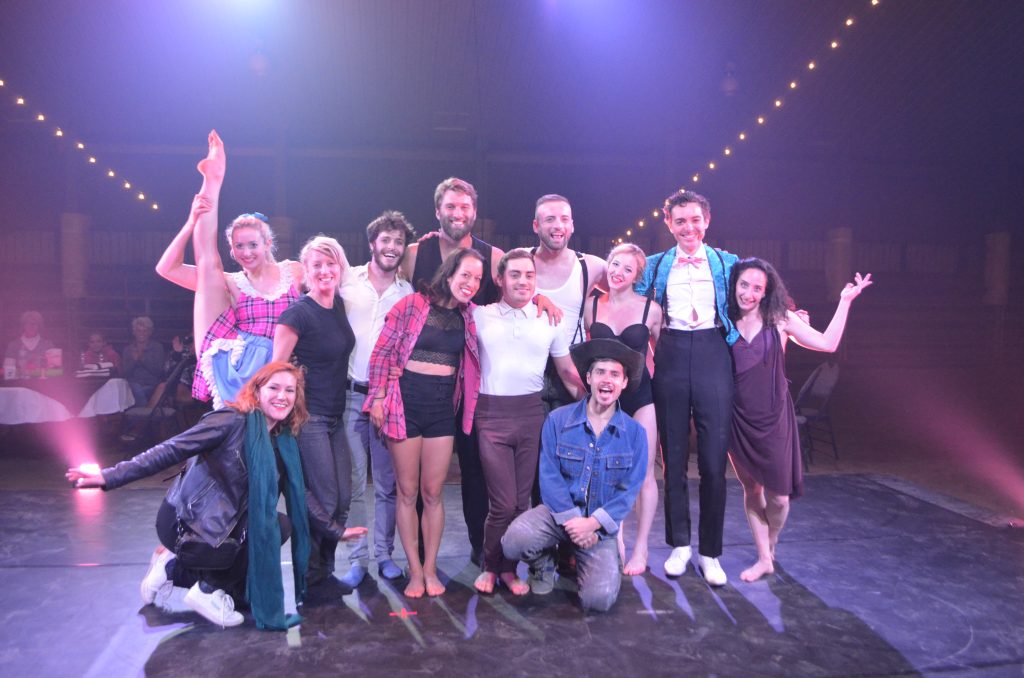The beginning of Le Monastère
Almost 7 years, a hundred performances and artists, thousands of spectators, and an ambitious vision: to present the purest form of circus art while offering the public new ways of discovering the contemporary circus. This is how we could summarize Le Monastère. However, it will take a little more to tell the full story; a story about the fateful meeting of its two co-founders, the discovery of the St Jax Center, and the realization of a very specific vision of a circus cabaret. Once upon a time…
From artists to founders: Rosalie & Guillaume
Before creating Le Monastère, both Rosalie and Guillaume had already discovered the world of the circus. Since her childhood, Rosalie wanted to become a circus artist. Living in a small country village where offerings were limited, she started out with dance. From here, she was able to take a double course of study, in parallel with sciences. For Guillaume, circus was not a predestined career but rather a late love affair. A hairdresser by profession, he used to make wigs for the Cirque du Soleil. One day, he saw an artist warming up backstage at the Bell Centre, and he had an epiphany. An audition followed, in which he learned that he was surprisingly flexible for his age. This led to intensive training at the Verdun Circus Preparatory School. It was in these studios, learning about circus arts, that the two 21 year olds met.
At that time, Rosalie was specializing in the double hoop discipline. She developed a duet that took her to Latin America and then to Europe, specifically Germany. There, she participated in several cabarets while also discovering the world of production. Guillaume specialized in the trapeze duet. He started in the United States before flying to Europe where he worked in different circus companies and trained to develop his skills.
A promising notebook
During these touring years, the young artists kept in touch and met again in Montreal from time to time. One evening they attended a comedy cabaret together. As they left the theatre, they discussed the lack of a similar formula for the circus in Montreal. As they passed in front of an abandoned church in the Villeray district, a name came to them for the first time: “Le Monastère”… Excited by this shared idea, they discussed their dreams all night long, and wrote their ideas in a notebook. They were also helped by Caroline Thibault, a friend who still collaborates with Le Monastère to this day.
The next day, still inspired from the previous night’s conversations, the duo went to Montreal City Hall to learn more about the possibility of developing this new concept in an old church. They were introduced to unfamiliar terms such as “business plans”. Things started to get serious.



A vision that became a reality
After spending several years traveling the world and visiting cabarets, the two friends noticed some shortcomings in their beloved city. Indeed, it lacked a platform for independent artists, who are all too often unrecognized in big companies. The final straw was that Montreal presents itself as the capital of the circus arts, but the general public is not actually very familiar with the circus, and has little access to the discipline.
They dreamed of a place with a warm atmosphere that would bring together artists who could express their art in a raw and organic way, and also give the public a chance to discover circus in its various forms. The intention was to position the artist at the heart of the act, as the author of a work and not only as a performer.
Rosalie and Guillaume wanted to be able to welcome the artist and his creation as it is, giving him full creative freedom and respecting each of their choices regarding the music, the costumes, the movements, and the light. Through this, the artist has all the space to transport us into their own universe. The role of the artistic director is like an art curator, selecting the works exhibited and/or the artists presented. Indeed, the director seeks a diversity in the disciplines and genres that should challenge the viewer. The order of presentation of the pieces is then designed so that they are highlighted individually, to ensure an optimal flow and to transport the public between numbers seamlessly. The artistic director also collaborates with the master of ceremonies to pay tribute to the artists.
And they wanted to realize this vision in a church! Originally, a monastery is a place where monks live. Historically, monks sometimes work collaboratively to sell their products. So the idea is similar… but instead of monks, we have artists!



The beginnings of Le Monastère
Now, the challenge was to find a place to host these circus cabarets. The first venue was the inclusive Club Unity, located in the heart of the Village, in 2017. At the same time, the duo had the opportunity to establish a two-year partnership with the Ranch Gagnon located in Beauce – Guillaume’s home region. As pioneers of unusual ideas, they transformed the ranch into a makeshift indoor circus tent. Then there was Plaza Theater, which was located in the neighborhood of La Petite Patrie. This venue was already well-equipped for these types of performances. Indeed, the theatre included an anchor point, developed by Carmagnole Productions during their cabarets (Rosalie was involved in this as well!). Stil, the team worked to better optimize the rooms and adapt the space to accommodate circus practices as other technical elements.
But all good things come to those who wait… Soon enough, in July 2018, the Anglican Church at St. Jax Center opened its doors to Le Monastère. The church dates back to the 19th century, and so the installation took a while as the building did not naturally meet the logistical needs of circus cabarets. Work was required to adapt and create a new structure anchoring into the ceiling with a beam. The adjustment was not only physical. Indeed, by settling down at 1439 Sainte-Catherine Street West, the team got to know its new tenants, including Graham Singh, Director of the St Jax Centre. In the beginning, a lot of meetings took place in order to establish a relationship founded in cooperation, trust and mutual respect. As the church is a cultural space with several community organizations, it was important to respect everyone’s needs. A few months later, in February 2019, Le Monastère was ready to welcome the public in this new place. A nice surprise followed: the masters of ceremony of the first cabaret in these walls were… priests!


Finding the right creative balance
Year after year, the form of the circus cabaret is refined, while always maintaining its original essence. In order to prepare for each show, several days of design are necessary for the artistic directors, Guillaume and Annie-Kim. Indeed, each show has its own unique theme. For example, in July, the Cabaret du Jugement Dernier will take place. This will be a friendly competition with a jury composed of renowned circus lovers. They will award the Golden, Silver or Bronze Chalice to the artists with the best balance between stage presence, creativity and technique. In August, Le Monastère will be decked out in rainbow colors to celebrate diversity for its Pride Circus edition with artists from the 2SLGBTQI+ community.
Many factors are taken into account when developing a show. Indeed, particular attention is paid to the selection of artistic disciplines, in order to showcase a wide variety of artists. Inclusivity is a fundamental value of Le Monastère, and this is represented and highlighted through the diversity of the artists.
The evolution of the team behind these beautiful projects
In addition to the few unpaid years of the co-founders, several others have also donated an incredible amount of time and help to this project. Caroline, who helped form the original vision, was the official photographer, and participated in the organization of the first events in 2017. Annie-Kim Déry, the co-artistic director, joined the movement in the early months and was a volunteer for several years. One year after their inception, Manon Fath joined the team as marketing and communications director in order to build a platform and voice for Le Monastère. Although she was the very first employee, she also gave many hours of her time as a volunteer. Many other people have also given their support over the years – members of the Board of Directors, friends, experts… it would be difficult to name and thank them all. Four and a half years after the beginning, the core team is growing, most recently with Alizé Honen-Delmar working in private equity. In the last 2 years, the team has more than doubled in size and now includes close to 15 people!
Today, volunteers are most welcome to help in many different capacities. Le Monastère has always offered donations of tickets for the cabarets to community organizations, for their clientele as well as for their valued volunteers.

What about the future?
A few years ago, the co-founders rediscovered the original notebook containing their first ideas and dreams. The vision was already there: a place for the free expression of artistic creation, and a warm and accessible environment for the public…
To continue to realize this dream, the team knew they wanted to support local artists and circus culture by creating circus cabaret experiences throughout the year. Using the same model as the European cabarets, a show would take place every three months, appealing to tourists passing through. The ultimate goal? To become an immersive and intimate cultural hub for the city. And, to offer easily accessible shows for any budget, helping all discover the tradition of circus enhanced with a contemporary Montreal flair.
The rest remains to be written...
May, 15 2023
Photos credits: Caroline Thibault, Michel Berdnikoff, Manon Fath
